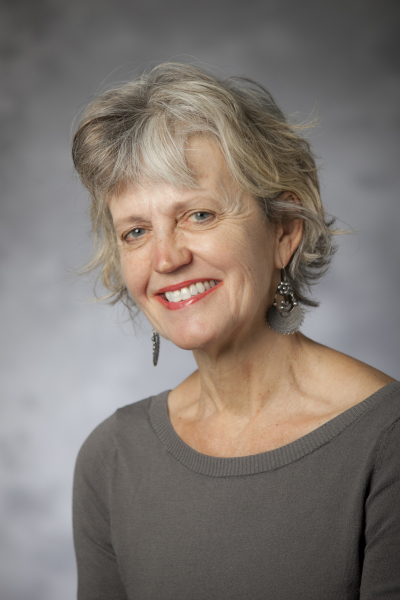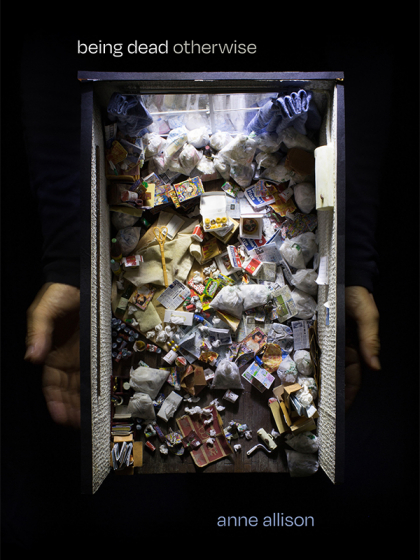Grave Friends and Automated Tombs: “Being Dead: Otherwise” Examines Emerging Burial Practices in Japan

Anne Allison, professor of Cultural Anthropology, has spent decades researching political economy and everyday life in modern Japan. Being Dead: Otherwise, released by Duke University Press in March, examines emerging practices surrounding death and burial as the Japanese adapt to an aging society where birthrates are falling, prices are rising and people are living longer than ever.
We caught up with Allison to ask what her research reveals about shifting mortuary practices in Japan, and how these innovations in caring for the deceased can inform other countries’ approaches to addressing the needs of their elderly and vulnerable populations.
In Being Dead: Otherwise, you outline some of the rules governing burial in Japan, including who can be buried in family graves. What did you find most surprising as you were conducting your research?
Conventional Japanese burial practices are to be buried alongside kin in an ancestral plot, often located in the countryside attached to a Buddhist temple. These plots have been traditionally passed down in the family for generations. But family plots like these are passed according to patrilineal lines of descent (from father’s side), according to primogeniture rules (only first sons are allowed to be buried here; all other sons are to establish their own family plots), and — for women — are based on marriage (women are to be buried in the plots of their husband’s family). What surprised me as I was doing research on this in Japan were two things: even for conventional, normative burials, there are a lot of folks who are excluded by this family principle of burial; second sons, for example, and women, who, if divorced, are excluded both from the plot of their birth family (because they no longer share the same last name) and that of their husband’s family. Also, most Japanese identify as a-religious. And yet burial practices are overtly Buddhist — the “religion of death” as Buddhism is called in Japan.
But, and this is what I find really interesting, as the traditional method of burial is getting dismantled/abandoned in Japan today (because of high aging/low birthrate demographics with more Japanese living alone, fewer having families or offspring to tend to them, and fewer having an attachment to a local Buddhist temple and priest), there is an explosion of interest and innovation around new mortuary practices. Death is everywhere in the air in Japan, but not necessarily in a bad sense. People routinely go to workshops, symposia and information sessions to learn how best to prepare their own ending arrangements. Ending preparations (shūkatsu) constitute a new popular culture: something to think about, anticipate, and be active in engaging since one can no longer leave these arrangements up to one’s family or kin. This energy around endingness in Japan is quite unlike what I see in the U.S. as more hesitancy, avoidance, or plain discomfort with death.
You describe a burial society called Ending Center, where single people of all ages enjoy a social community before death with those who will be buried near them. Do you think this model offers an example to other societies with aging, single populations?
Ending Center is an alternative burial society with grounds anyone can enter — without a successor or family, which is usually mandated to enter both public and private cemeteries. Rather than the “blood” ties conventionally required (to maintain the grave and pay annual maintenance fees), here one becomes a “member” by paying a one-time fee. With this, one will be buried in the association’s burial grounds. But an added benefit is being able to attend get-togethers ahead of time with what are called “grave-friends”: ties made with those one will share burial with down the road. And it is not merely single folks who sign up for associations like Ending Center. I have met married couples there and others who have children or kin but prefer this model of burial to the conventional family plot (with upkeep and visitation rituals that can seem onerous).
In get-togethers hosted by Ending Center, I was consistently struck by how directly the topic of death preparation was addressed. No tip toeing around in discussions that veered from dementia to hospice. And yet folks seemed energized by it all as if this gave them answers and guidelines for being active in what otherwise might be a period of passive waiting for the end. These initiatives give both agency and companionship to what the aging — singles or not — may often experience as a long, lonely, and unsettling period of time. The life expectancy in Japan is longer than elsewhere (90 for women, 86 for men) making for as much as 25 years spent following retirement in “post-productivity.” I believe that a model like Ending Center, with the workshops and get-togethers it holds alongside the burial grounds it provides, has much to offer others in the world who are, or in the future are likely to be, facing similar challenges of scarcity of care in aging/death.
Haruyo Inoue-san, the director of Ending Center, will be visiting Duke in November 2023 and will give a public talk. As an advocate for what she calls the human rights of the dead and in her capacity as “midwife of death,” she is someone we have much to learn from.
Planning for the end, keeping notebooks of “Ending Notes” — why are the Japanese more willing to think about death than most Americans seem to be?
The trend of “Ending Notes’ is an interesting one. These are notebooks sold in bookstores that users buy, then fill in, listing pertinent information and also their biographical details and desires, that help make arrangements for their ending time. One of my friends showed me hers. At the time she was tending to it almost like a daily diary — filling in not only bank accounts and contacts to be informed should she die, but also her favorite songs, haiku she had composed, dates of recent trips and other personal details. This woman, close to 60 at the time, is single, has no children and will likely outlive her one remaining family member, a sister. And because there will be no one to tend to the family grave once she is gone, my friend is seriously considering closing up the grave and arranging for her own remains, as well as all those now interred there, to be deposited in an urban columbarium where the staff would maintain the spirits. She laughs when I ask about a funeral, saying she’d prefer to leave money for her friends to just have a nice meal in her honor instead. So, will all the personal details and information she is compiling there, will her “Ending Notes” ever be read by anyone else or go into final memorial arrangements? Perhaps not, I suspect. But the activity of keeping Ending Notes seems both meaningful and pleasurable nonetheless.
One aspect of all this attention and activity around death preparedness in Japan that I definitely think we could learn from here in the United States is both the pleasure and sociality it can generate for those engaging in it. Rather than a “dreary” topic to be avoided, many Japanese seem to find both companionship and meaning in the activity itself. At the root may be a fear or worry of being stranded, alone, disconnected at death. But, in engaging preparedness, something positive can ensue.
In the book’s final chapter, you talk about “automated graves” — the building of urban, high-density storage facilities for cremated remains that employ automation to deliver ashes to visiting mourners. You seem to endorse this as a way to mediate between the drawbacks of traditional burial and the social need to have the dead accessible to the living in a space for mourning and remembrance. Are these facilities being built in countries other than Japan? If so, how are they adapting the Japanese model to meet local needs?
The automated graves I discuss in the final chapter of my book offer an innovative option for burial that is at once convenient, affordable and open to anyone given the price of membership. This is increasingly attractive to not only aging singles but also a multitude of others in Japan who find the family-grave either impractical, undesirable, or simply not available. These facilities also offer the service of “eternal memorial” (eitai kuyō) — offering the memorials a family would normally give the deceased here performed by a Buddhist priest on staff. This part of the arrangement seems rather culturally unique, though I do believe similar interment facilities are being constructed now in other parts of East Asia. And other kinds of innovations in mortuary/burial/funeral design are certainly being implemented across the world as reported on by scholars such as Ruth Toulson (in the case of Singapore) and Shannon Dawdy (for the U.S) and practiced by trendy morticians (like Caitlin Doughty). But one point I would like to emphasize about the automated graves is that they are commercial and dependent on users being able to pay the membership fee which, though less than a conventional family headstone or plot, can still be considerable. This is why other options non-dependent on the marketplace are desperately needed, not only in Japan but elsewhere. What happens to those folks who, without kin to bury them or the resources to make plans for themselves ahead of time, die stranded and alone? In the case of Durham, I have just found out, the ashes are assembled by the city and routinely taken to the ocean to be scattered at sea.
Another Japanese plan I also discuss in my final chapter — a civic burial mound where everyone was to be buried, free of charge, with ashes collectively co-mingled — was intended to avoid the issue of inequity and be run on the order of a public park. Proposed by a progressive architect in the 1930s, it never came to fruition. And yet this is the model that appeals to me more than that of automated graves.
I intend to continue researching whether, and on what conditions, perpetual burial spaces premised on alternative mechanisms to care-provision (such as automation or public workers) exist in other countries, and what it would take to implement such operations in the United States. I am most compelled by the issue of what happens to the remains of those who die alone, unknown and untended by others. And while I am interested in doing scholarly research on this, I would like to become more involved in the activism of practice. How to craft/create new sorts of necro-spaces that open up to ever more equitable and sustainable possibilities for endingness.
Find out more about Being Dead: Otherwise by reading an excerpt from the book in Literary Hub.

